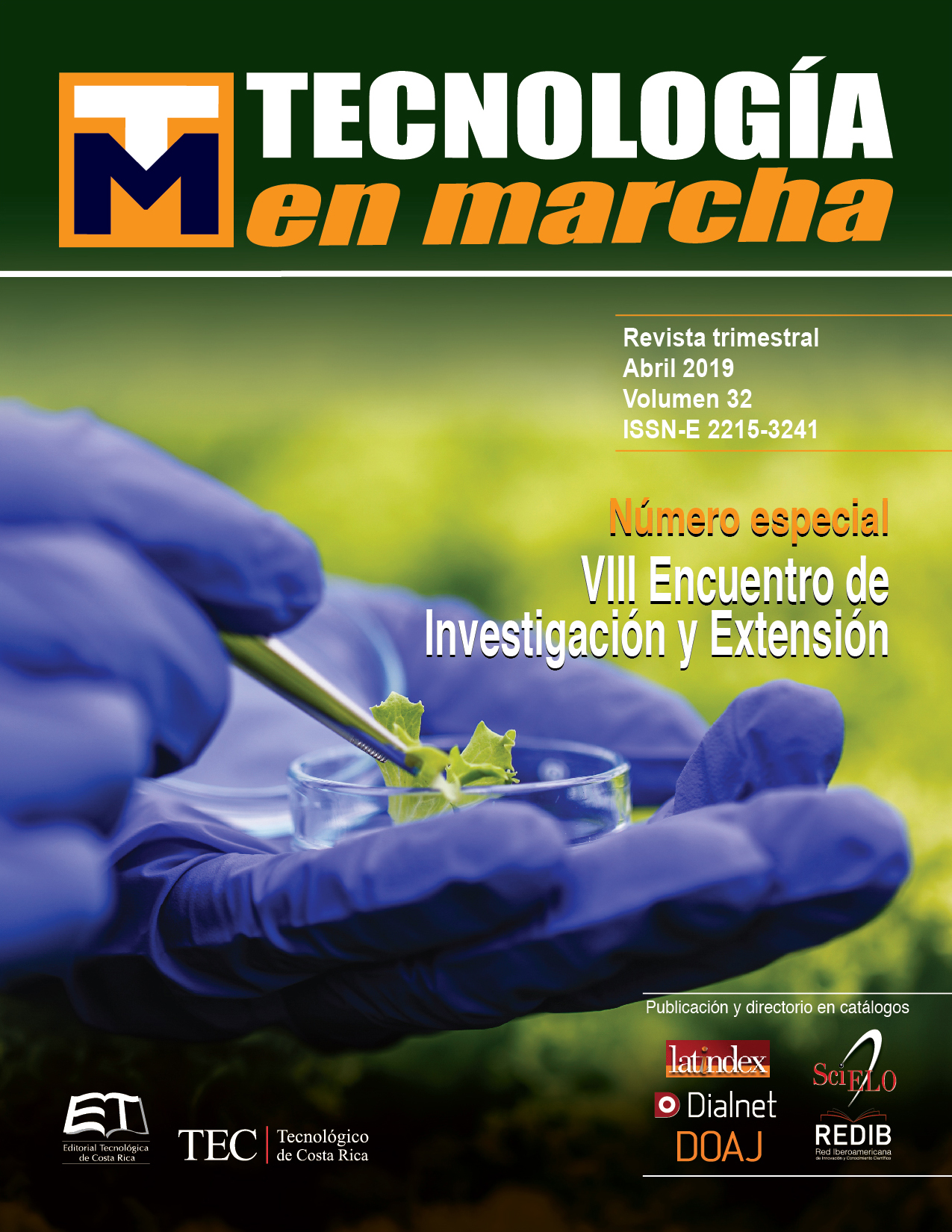Assessment of magnetic properties in bioindicators and in urban dust, as an alternative method to monitor atmospheric pollution in areas of vehicular flow: Preliminary results about heavy metal in bioindicators
Main Article Content
Abstract
Three of the greatest economic trends of the last decades have been the population, industrial and urban growth. This tendency has caused the increase of gas emissions that pollute the air, affecting human health. The emissions pollute the air with suspended particles (PM) as well as heavy metals, which are retained in these particles. Monitoring air pollution by traditional methods is expensive; on the other hand, the use of bioindicators to measure pollution in air has been reported. The bioindicators selected were cypress, bitter lemon and laurel from India. The objective of the project is to generate a novel alternative method, low in cost and easy application to monitor air pollution in areas with vehicular flow. The content of heavy metals in various bioindicators, was determined in different areas of the Greater Metropolitan Area (GAM). Analysis of possible correlations that may exist between each metal vehicle density at sampling points was evaluated. The preliminary results presented a correlation between the niquel (Ni) content in cypress leaves with respect to the Vehicle Density evaluated statistically with a confidence level of 95%.
Article Details
Los autores conservan los derechos de autor y ceden a la revista el derecho de la primera publicación y pueda editarlo, reproducirlo, distribuirlo, exhibirlo y comunicarlo en el país y en el extranjero mediante medios impresos y electrónicos. Asimismo, asumen el compromiso sobre cualquier litigio o reclamación relacionada con derechos de propiedad intelectual, exonerando de responsabilidad a la Editorial Tecnológica de Costa Rica. Además, se establece que los autores pueden realizar otros acuerdos contractuales independientes y adicionales para la distribución no exclusiva de la versión del artículo publicado en esta revista (p. ej., incluirlo en un repositorio institucional o publicarlo en un libro) siempre que indiquen claramente que el trabajo se publicó por primera vez en esta revista.

